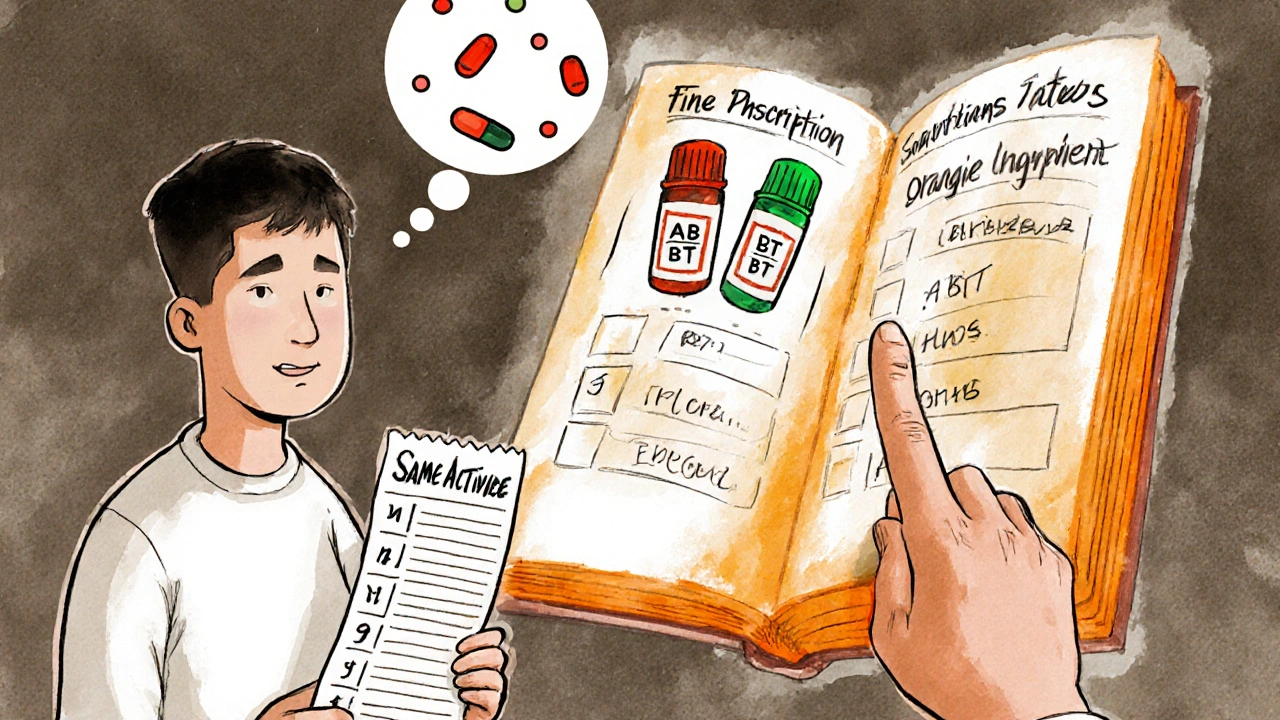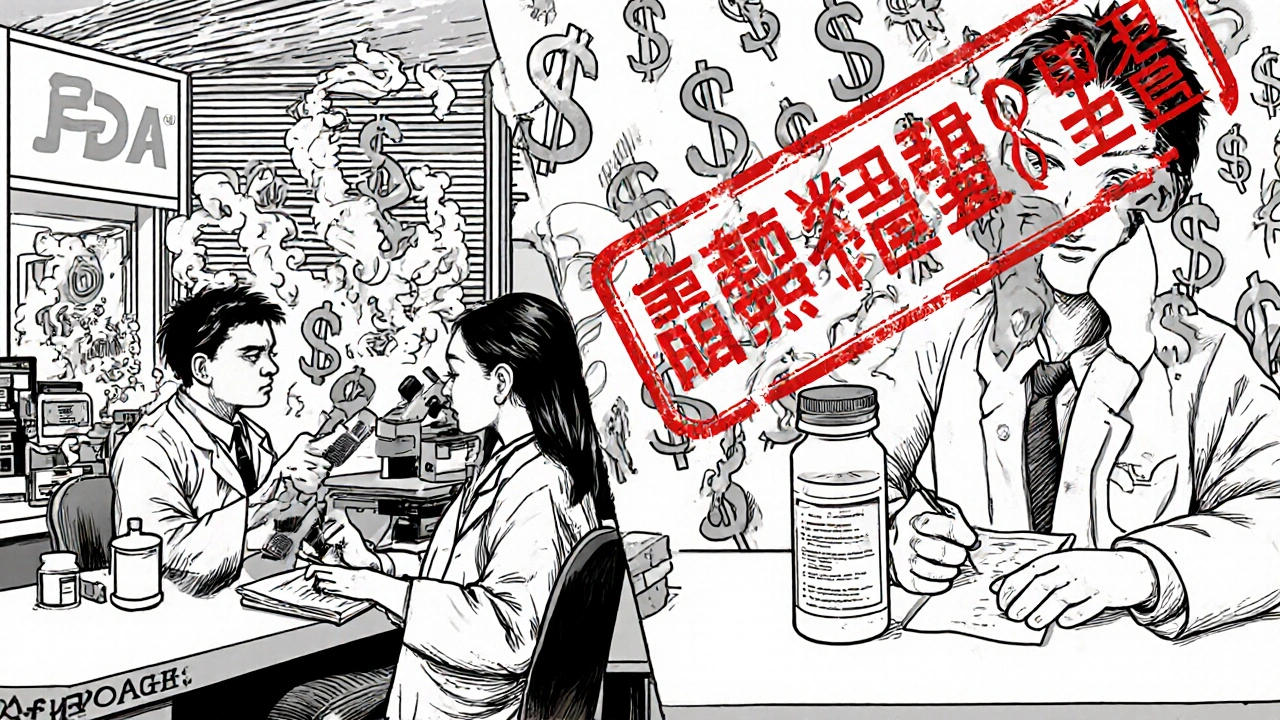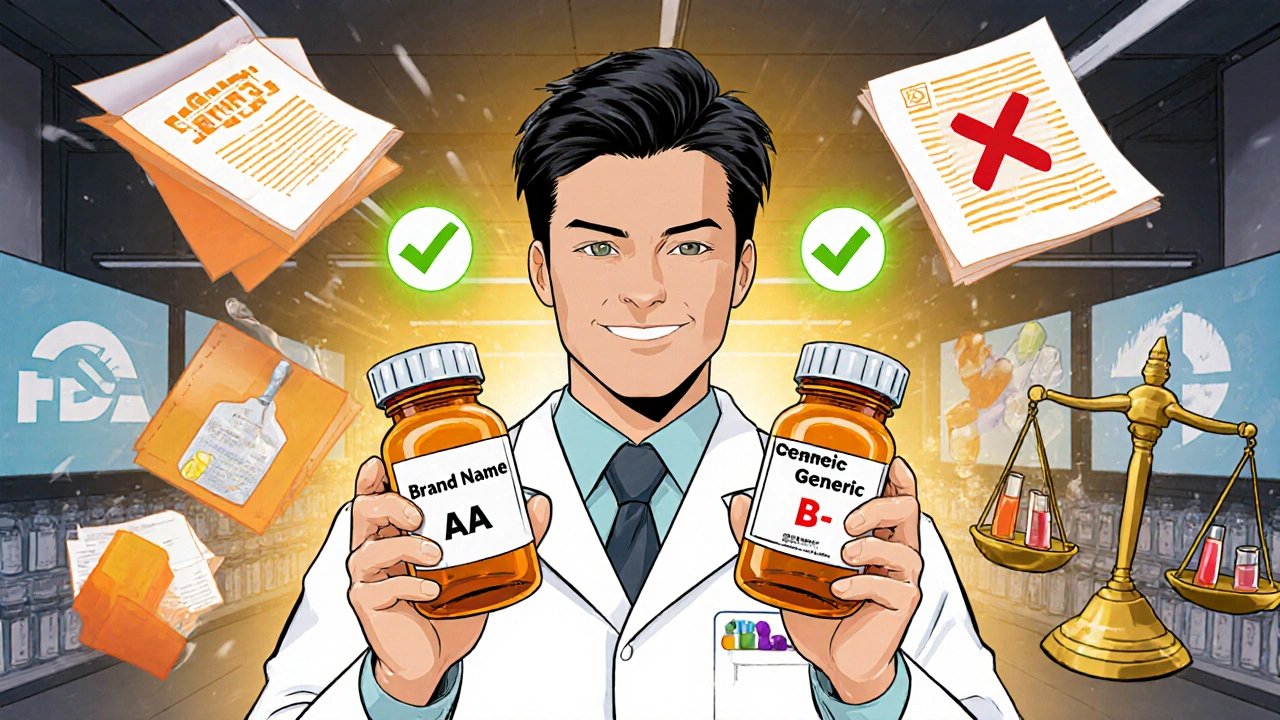When you pick up a prescription at the pharmacy, you might not realize that a legal system is silently deciding whether you get the brand-name drug or a cheaper generic version. That system? The FDA’s Therapeutic Equivalency (TE) Codes. These aren’t just technical labels-they’re the legal backbone of generic drug substitution across the United States. And they’re the reason your pharmacist can swap out a $200 brand-name pill for a $10 generic without asking your doctor again.
What Are Therapeutic Equivalency Codes, Really?
Therapeutic Equivalency Codes are alphanumeric ratings assigned by the FDA to prescription drugs that have multiple versions on the market. They tell pharmacists and doctors one thing: Can this generic be swapped for the brand without risking your health? These codes are published in the FDA’s Approved Drug Products with Therapeutic Equivalence Evaluations, better known as the Orange Book. First released in 1980 and dramatically expanded after the 1984 Hatch-Waxman Act, the Orange Book is updated every month and contains over 14,000 drug products. The code itself has two parts. The first letter tells you the big picture: A means the generic is considered therapeutically equivalent to the brand-name drug. B means it’s not-either because bioequivalence hasn’t been proven, or there are unresolved safety concerns. The second letter adds detail about the drug’s form or specific issues. For example:- AA: Immediate-release oral tablets or capsules with no bioequivalence issues.
- AB: Products that initially had bioequivalence questions but later proved equivalent through more data.
- BT: Topical creams or ointments with unresolved bioequivalence problems.
- BN: Nebulized aerosol products where delivery method makes testing harder.
- BX: No data exists to judge equivalence-so substitution isn’t allowed.
These aren’t arbitrary labels. Each code is based on strict scientific standards: identical active ingredients, same dosage form, same strength, and proven bioequivalence through clinical studies. The FDA doesn’t just assume generics work the same-they require proof.
How the Law Turns Science Into Substitution Rules
Here’s where science meets law. The FDA assigns TE codes, but it’s the states that decide whether pharmacists can actually substitute a generic for a brand-name drug. Every single U.S. state has laws that tie their substitution rules directly to the Orange Book. In California, for instance, the Business and Professions Code Section 4073 says pharmacists can only substitute drugs with an A rating. In New York, the Office of the Professions mandates that pharmacists check the current Orange Book edition before swapping any medication. Even if a generic is FDA-approved, if it has a B code, substitution is illegal in most states. This system exists because of the Hatch-Waxman Amendments of 1984. Before then, generic manufacturers had to run full clinical trials to prove their drugs worked. That was expensive and slow. Hatch-Waxman changed that by letting generics rely on the brand’s data-as long as they proved bioequivalence. That’s the foundation of the TE code system: if a generic matches the brand’s performance, it can be swapped. It’s not about cost-it’s about safety and consistency.
Why Some Generics Get an ‘A’ and Others Get a ‘B’
Not all generics are created equal-even if they contain the same active ingredient. A pill made by Company X might be rated AA, while a pill made by Company Y with the same ingredient gets a BA or even a BX. Why? Because of formulation differences. Think of it like baking cookies. Two recipes might both use flour, sugar, and butter-but one uses a different type of butter, or bakes at a different temperature. The result can be different. The same goes for drugs. A generic version might use a different coating, filler, or release mechanism. If those changes affect how the drug is absorbed into your bloodstream, the FDA flags it with a B code. This is especially true for complex drugs: inhalers, injectables, topical creams, and extended-release pills. For example, a generic asthma inhaler might have the same active ingredient as the brand, but if the propellant or particle size differs, it might not deliver the same dose to your lungs. That’s why many inhalers and topical products still carry B codes-even after years on the market. According to the FDA’s 2023 data, 8,742 products have A codes, while 3,415 have B codes. That’s nearly a quarter of all listed generics that can’t be legally substituted in most states. The FDA is working to fix this. Their Complex Generic Drug Initiative has cut review times for tricky products from 34 months in 2018 to just 22 months in 2023.What Happens When a Generic Has a ‘B’ Code?
If your prescription says “Dispense as Written” or the generic you’re offered has a B code, your pharmacist can’t switch it out-even if you ask. And they won’t. Most pharmacists are trained to check the Orange Book before dispensing any generic. A 2023 survey by the National Community Pharmacists Association found that 89% of independent pharmacists consider the Orange Book “essential” for daily work. But here’s the catch: even if a drug has a B code, it’s still FDA-approved and legal to prescribe. It just can’t be substituted. So if your doctor prescribes a brand-name drug with a B generic available, you’ll get the brand unless you specifically request the generic and your insurance covers it. Many patients don’t realize this. They assume “generic” means “substitutable.” But if the code is BT (topical) or BN (nebulizer), that’s not true. Pharmacists often avoid these products because of patient concerns-even if the science says they’re safe. A 2022 survey found that 68% of pharmacists were reluctant to substitute BT-rated topical products due to perceived clinical differences, even when the FDA deemed them equivalent.
The Real Impact: Billions Saved, But Barriers Remain
The TE code system has saved the U.S. healthcare system over $1.7 trillion since 1995. In 2022 alone, drugs with A codes generated $298 billion in savings. That’s money that went back into patients’ pockets, insurance premiums, and hospital budgets. But the system isn’t perfect. In 2022, the FDA received 1,247 citizen petitions challenging TE codes-up 17% from the year before. Most came from brand-name companies trying to block generic competition, especially for complex drugs. These petitions delay approvals and keep prices high. The FDA’s 2023-2027 Strategic Plan aims to reduce the number of B-coded products from 24.3% to under 15% by 2027. They’re investing $28.7 million through the Generic Drug User Fee Amendments (GDUFA) III to improve testing methods for complex delivery systems. Digital upgrades to the Orange Book now let EHR systems pull TE code data automatically, so doctors and pharmacists get real-time updates.What You Need to Know as a Patient
You don’t need to memorize TE codes. But you should know this: if your prescription is filled with a generic, it’s because it passed the FDA’s strictest safety and effectiveness tests. If you’re handed a different generic than last time, that’s normal-different manufacturers can have different TE codes. If you’re prescribed a drug with a B code and you’re unsure why you’re paying more, ask your pharmacist. They can check the Orange Book and explain why substitution isn’t allowed. If you’re switching from a brand to a generic and notice a change in how the drug works, tell your doctor. It’s rare, but formulation differences can matter in sensitive cases. The system works because it’s grounded in science, enforced by law, and monitored daily by pharmacists. It’s not about cutting corners-it’s about making safe, affordable medicine accessible to everyone.Can a generic drug with a B code ever be substituted for a brand-name drug?
No. By law, pharmacists in all 50 U.S. states are required to follow the FDA’s Therapeutic Equivalency (TE) codes in the Orange Book. Products with a B code are not considered therapeutically equivalent and cannot be substituted for the brand-name drug unless the prescriber specifically allows it in writing. Even if the generic is FDA-approved, the B code means there are unresolved bioequivalence or safety concerns that prevent automatic substitution.
Why do some generic drugs have an A code while others for the same drug have a B code?
It comes down to formulation differences. Two generics of the same drug can have different inactive ingredients, coatings, or release mechanisms. If those differences affect how the drug is absorbed or delivered in the body, the FDA may assign a B code to one version and an A code to another. For example, a tablet with a different binder might release the drug too slowly or too quickly. The FDA tests each product individually-so even if two generics contain the same active ingredient, their TE codes can differ.
Are over-the-counter (OTC) drugs assigned TE codes?
No. The FDA’s Therapeutic Equivalency Code system only applies to prescription drugs approved under Section 505 of the Federal Food, Drug, and Cosmetic Act. Over-the-counter medications are not evaluated or coded in the Orange Book. Substitution of OTC drugs is regulated by state pharmacy laws and manufacturer labeling, not by FDA therapeutic equivalence ratings.
How often is the Orange Book updated, and why does it matter?
The Orange Book is updated monthly, reflecting new drug approvals, changes in TE codes, and withdrawals. This matters because a generic drug’s substitution status can change. A product previously rated B might be reclassified as A after new bioequivalence data is submitted. Pharmacists must use the most current version to ensure legal compliance. Outdated information could lead to illegal substitutions or missed savings opportunities.
Do all states follow the FDA’s TE codes exactly?
Yes. All 50 states and U.S. territories legally require pharmacists to base substitution decisions on the FDA’s Orange Book TE codes. State pharmacy laws are written to mirror the FDA’s evaluations. While some states have additional rules-like requiring patient consent or allowing prescriber overrides-the TE code remains the primary legal determinant. No state permits substitution of a B-coded product without explicit authorization from the prescriber.

Georgia Green
November 18, 2025 AT 05:00Just wanted to say thanks for explaining this so clearly. I work in a pharmacy and the Orange Book is my bible, but most patients have no idea what those letters mean. I always print out the TE code sheet for them when they ask why we can't swap their inhaler. It’s a small thing, but it cuts down on the panic.
Matt Wells
November 19, 2025 AT 18:40It is imperative to note that the FDA's therapeutic equivalency framework is not merely a regulatory convenience-it is a scientifically rigorous, legally codified mechanism designed to preserve public health integrity. The notion that generics are interchangeable without empirical validation is not only erroneous but perilous.
Ashley Unknown
November 20, 2025 AT 12:58Let me tell you something they don’t want you to know-this whole TE code system is a sham. Big Pharma paid off the FDA to keep B-coded drugs on the market so they can keep charging $200 for a pill that costs 3 cents to make. The ‘bioequivalence studies’? Fabricated. The Orange Book? A corporate brochure with a seal of approval. I’ve seen people die because their ‘equivalent’ generic didn’t work, and the pharmacist just shrugged and said ‘it’s FDA-approved.’ That’s not safety-that’s systemic murder by spreadsheet. And don’t even get me started on how they silence whistleblowers. You think they’d let a pharmacist post this if it wasn’t all rigged? They’re watching. They’re always watching.
Sylvia Clarke
November 22, 2025 AT 03:23So let me get this straight-your $10 generic gets an ‘A’ because it dissolves in your stomach the same way as the $200 brand, but your $12 generic gets a ‘B’ because… the binder is slightly different? That’s like saying two chocolate chip cookies are ‘not equivalent’ because one has sea salt and the other has kosher salt. Both still taste like heaven. Meanwhile, people are skipping meds because they can’t afford the brand, and the system punishes them for it. The real ‘B’ code here is the healthcare system itself.
Christina Abellar
November 22, 2025 AT 09:05This is super helpful. I always assumed all generics were the same. Now I know to ask my pharmacist about the code if I notice a change in how a drug works.
Jennifer Howard
November 22, 2025 AT 19:07It is unconscionable that the FDA permits any substitution at all. The human body is not a laboratory test tube, and no amount of bioequivalence data can account for the subtle, sacred interplay between individual physiology and pharmaceutical formulation. One must ask: if a drug is truly safe and effective, why is substitution even permitted? The answer is not science-it is corporate greed masquerading as public policy. I have personally witnessed the collapse of renal function in a patient after a generic switch. The FDA did nothing. The pharmacist did nothing. And now, I will not rest until every TE code is abolished.
George Gaitara
November 23, 2025 AT 09:35Wow. Another one of these ‘FDA knows best’ rants. So let me guess-next you’ll tell me the moon landing was real and that vaccines don’t contain microchips? The Orange Book is a joke. I’ve been on the same generic for 10 years, switched to a new batch with the same ‘AA’ code, and suddenly I’m dizzy and nauseous. Coincidence? Or did the manufacturer just swap out a filler that’s actually toxic? The FDA doesn’t test for that. They just check if the pill dissolves in water. That’s not medicine. That’s a magic trick.
Deepali Singh
November 24, 2025 AT 01:41Interesting. But you didn’t address the fact that 73% of B-coded drugs are from U.S.-based manufacturers, while 89% of A-coded generics are from India and China. This isn’t about science-it’s about protectionism. The FDA’s ‘complex drug initiative’ is just a shield for domestic pharma to delay competition. The real crisis isn’t bioequivalence-it’s geopolitical supply chain control disguised as patient safety.
Eva Vega
November 25, 2025 AT 20:52From a pharmacokinetic standpoint, the distinction between AA and AB ratings is critical, particularly in narrow therapeutic index (NTI) agents such as warfarin or levothyroxine. Even minor variations in Cmax or AUC can precipitate clinically significant adverse events. The FDA’s current criteria for bioequivalence-80–125% confidence interval-are statistically adequate but physiologically insufficient for NTI drugs. The absence of population-based pharmacogenomic stratification in TE code assignment represents a fundamental oversight in personalized medicine implementation.
Abdul Mubeen
November 26, 2025 AT 10:08And yet, the same FDA that rates these drugs also approved a drug called ‘Xenon-127’ that was later pulled for causing hallucinations in 12 patients. Coincidence? I think not. The Orange Book is a smokescreen. The real question: Who owns the data behind the bioequivalence studies? And why is it all locked behind NDAs? This isn’t transparency-it’s corporate espionage with a government stamp.